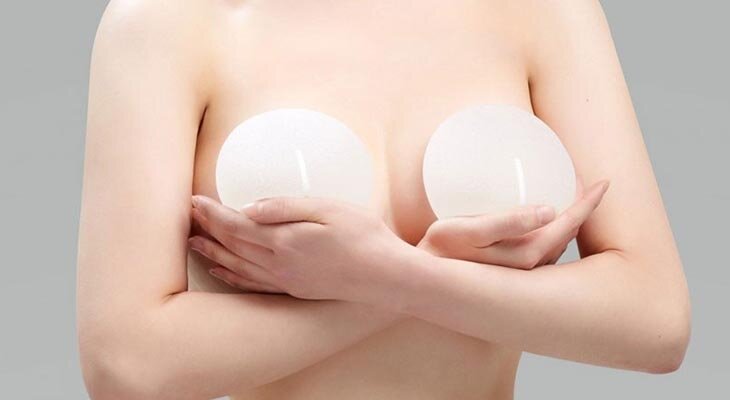
A taller patient or a patient with a higher weight should naturally have larger implants. In a short patient, D-size breasts can give a very uncomfortable appearance. B-size breasts may appear very small in a tall patient.
This is one of the points we pay attention to when choosing the breast size. Some individuals are tall but have narrow rib cages. Or, a patient who is short but has been doing sports for a long time may have broad shoulders and a wide chest. In addition, sometimes the rib cage is turned inward in anteroposterior diameter. Or it could be protruding. All of these affect the size of the implant to be selected.
If there is sufficient size and breast tissue before the operation, we can be more comfortable in choosing the size of the prosthesis. On the contrary, having a very small amount of breast tissue may cause a large prosthesis to be visible from the outside. The smaller the breasts, the better the placement of a smaller prosthesis for the patient in some cases.
As it is known, breast augmentation surgery also helps patients to lift their breasts as an additional benefit. Especially in patients who need a lift, sufficient breast lift can be achieved without the scars of mastopexy surgery. As the sagging of the breast increases, the size of the prosthesis to be placed must increase.
If the patient also needs the breasts to be lifted in the breast augmentation surgery, she should prepare herself that her breasts should be slightly larger than she expected.
On the other hand, if patients with skin laxity are operated with excessively large prostheses, after a certain point, their breasts will sag due to the weight of the prosthesis.
So another paradox. If the prosthesis is not large enough, the breast will appear drooping, and if the prosthesis is too large, the breast will still appear droopy. Then the optimal size is determined by the doctor during the surgery.
Many women have asymmetry in their breasts. This is extremely natural. In the majority patient group, this size difference becomes more pronounced during the menstrual period.
If this size difference is not clearly visible when looking from the front, there is no need to correct the asymmetrical size of the breasts. However, in patients with very pronounced asymmetry, a larger prosthesis may be required to be placed on the smaller side.
The measurements we are talking about here are made both before and during the operation after the pouch in which the prosthesis will be placed is created.
These measurements are the most important point in the evaluation because the first 5 items are all about the doctor’s aesthetic perception, while the last item includes purely mathematical measurements.
The most important sentence to remember is this. In breast augmentation surgeries, while the size of the rib cage does not change, the size of the breast, which used to be A size, increases as B – C – D.
What is Varicocele? Varicocele is the varicose veins that drain the blood in the testicles,…
What is Hemorrhoids ? It is a disease caused by the loosening of the veins…
What Is Monkeypox Virus? Symptoms and Ways of Transmission! The monkeypox virus, which has been…
What is Pelvic Venous Congestion Syndrome? (Failures Observed in Ovarian/Testicular Veins) What is Pelvic Venous…
What is Myoma ? Myoma, is a benign tumor arising from the uterine muscles. It…
What is Back Lift? Back stretching, excessive weight gain and aging may cause you to…